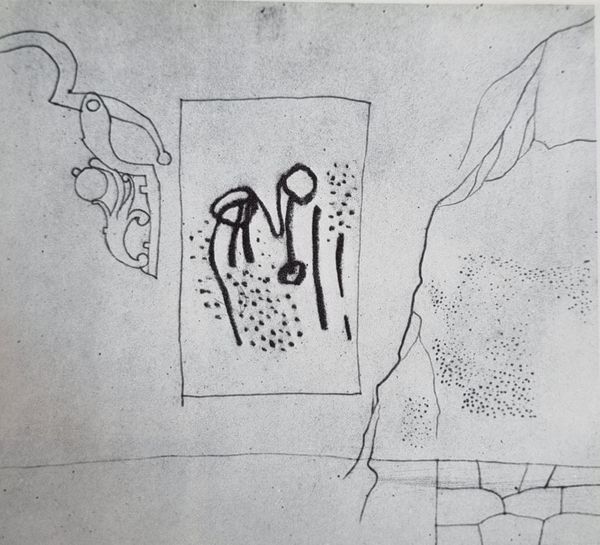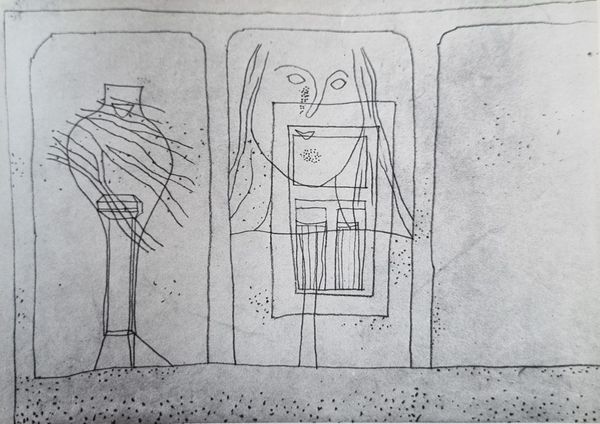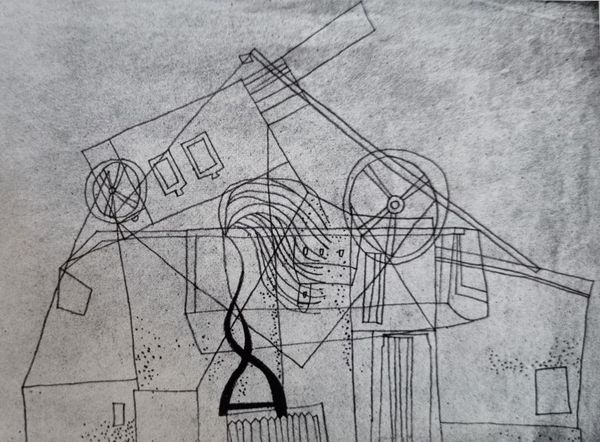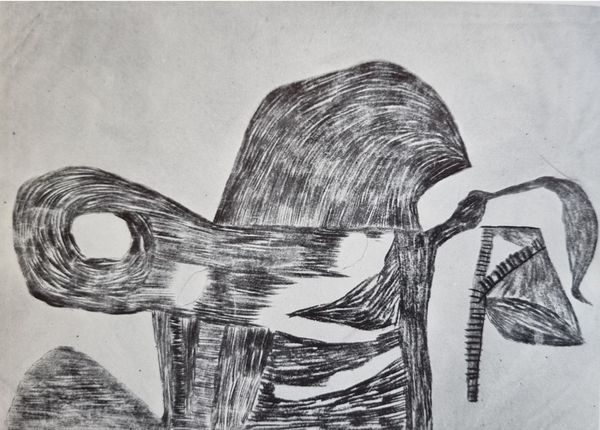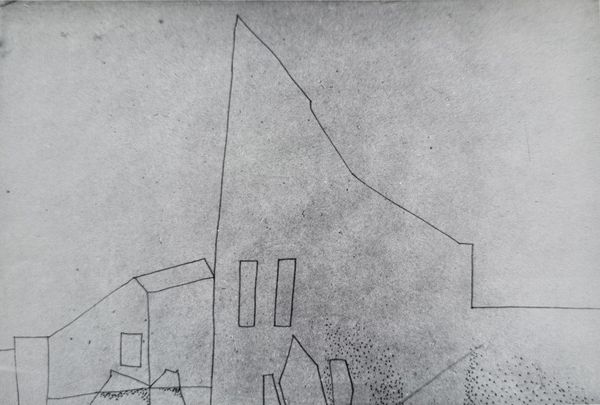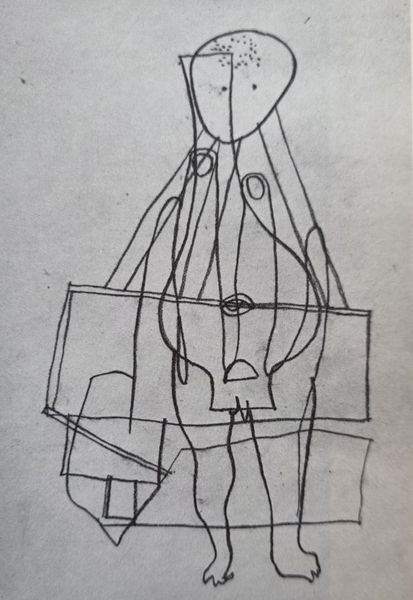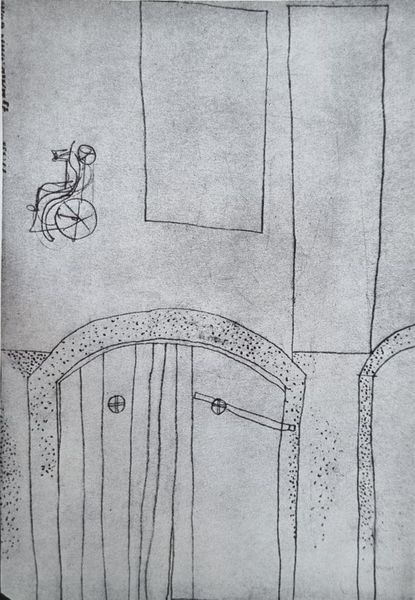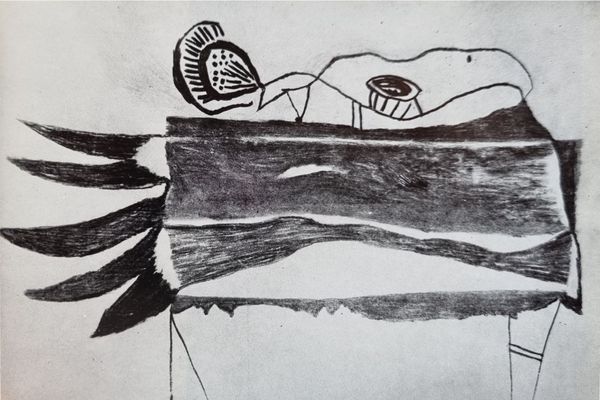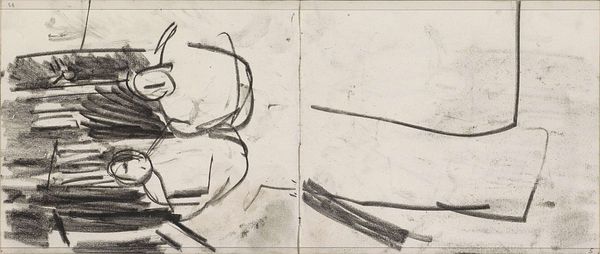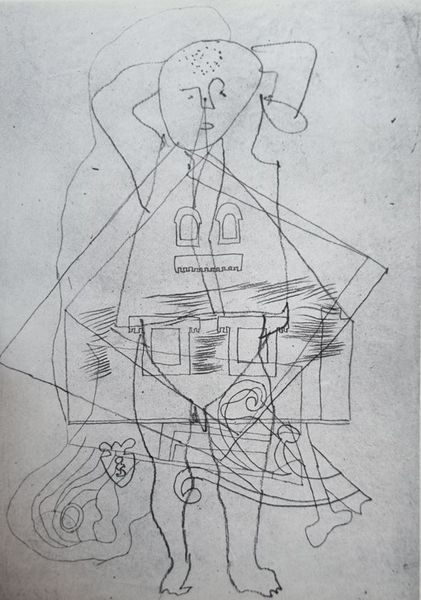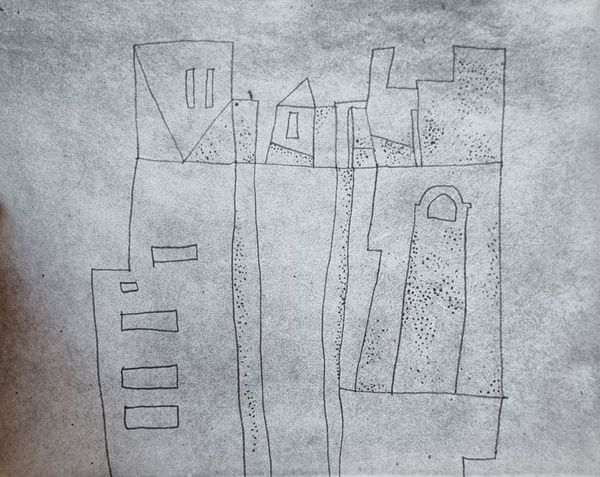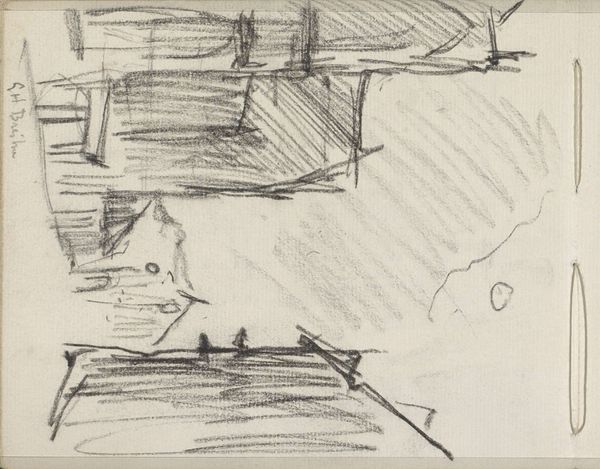
drawing, paper, ink
#
drawing
#
cubism
#
self-portrait
#
figuration
#
paper
#
ink
#
geometric
#
abstraction
#
line
#
cityscape
Copyright: Public domain
Vajda Lajos made this etching with self-portrait in 1937, during a pivotal period for modernism in Hungary. He was part of a generation of artists seeking to reconcile international avant-garde movements like Surrealism with their own cultural and historical context. Note how the image combines a stylized self-portrait with rural motifs – houses, doors, and perhaps even abstracted landscapes. This blending speaks to a broader artistic concern of the time: to find an authentic national identity amidst rapid social and political changes. Lajos and other Hungarian artists were associated with the so-called "European School", which pushed back against conservative artistic norms, resisting the influence of state-sponsored art. Lajos was interested in creating an artistic language that was at once modern, Hungarian, and rooted in the lived experience of ordinary people. To fully appreciate Vajda Lajos, we need to consider the art institutions and cultural politics of interwar Hungary. Art historical research, including the study of manifestos, exhibition catalogs, and artist biographies, helps us understand the complex social forces that shaped his work.
Comments
No comments
Be the first to comment and join the conversation on the ultimate creative platform.
